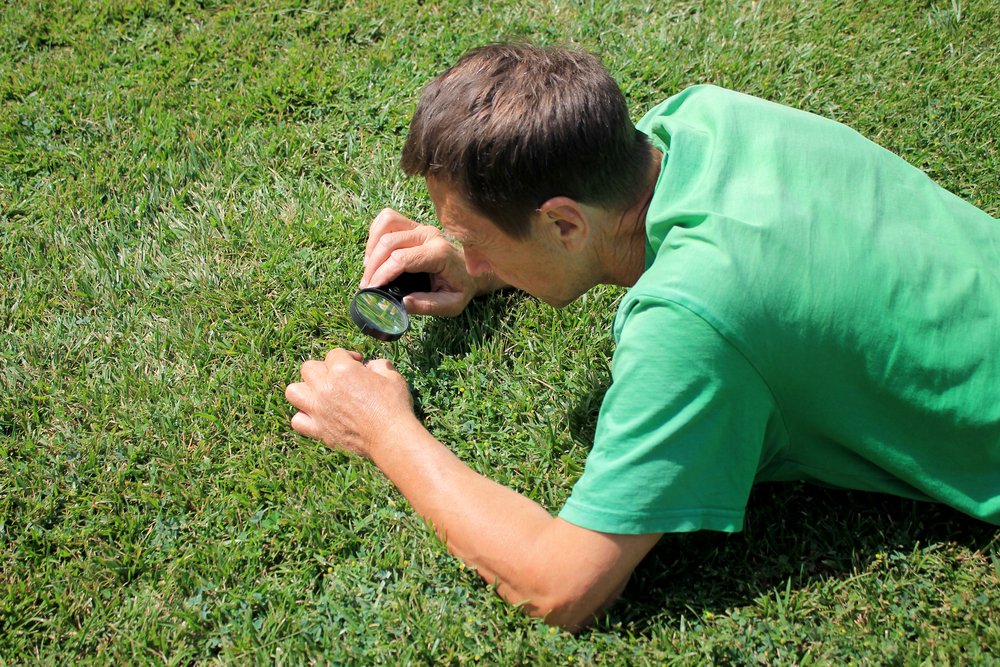A healthy and beautiful lawn is a source of pride and joy for many homeowners.
However, maintaining a lush and green lawn can be challenging when pests threaten to undo all your hard work.
Pests such as grubs, chinch bugs, and cutworms can quickly infest your lawn and cause significant damage if left uncontrolled. They feed on the roots and leaves of your grass, leading to brown patches, stunted growth, and even death in severe cases.
The consequences of a pest infestation can be costly, as repairing the damage may require reseeding or even sodding your lawn.
Moreover, neglected pest problems can create an ideal breeding ground for more pests, causing a vicious cycle of damage and destruction. The good news is that preventing pest infestations is the key to maintaining a healthy and attractive lawn.
So how do you do that? We’ll tell you everything you need to know in this post.
What Are the Most Common Lawn Pests?
There are a variety of pests and insects that can wreak havoc on your lawn. These pests are typically small and difficult to detect, but can cause significant damage to your lawn if left unchecked.
Some of the most common lawn pests include grubs, chinch bugs, sod webworms, and armyworms.
Grubs are the larval stage of certain types of beetles, and can cause serious damage to grass roots as they feed on the organic matter in the soil. Chinch bugs feed on grass blades and can quickly cause large brown patches to appear on your lawn.
Sod webworms and armyworms are both caterpillars that feed on grass blades and can cause similar damage to chinch bugs.
In addition to these pests, there are also a variety of insects that can cause damage to your lawn, such as ants, ticks, mites, and fleas. These insects can quickly multiply and spread if not controlled, causing damage to both the grass and any other plants in your lawn.
Preventing Common Lawn Pests:
There are a variety of steps you can take to prevent common lawn pests. Let’s take a closer look.
Regular Mowing and Trimming
One effective way to keep pests away from your lawn is by regularly mowing and trimming grass. This simple act can do wonders in controlling weeds and grubs without causing any damage to your grass.
To achieve the desired effect, try to mow your lawn high. By doing so, you can avoid cutting too much of the grass that may weaken the roots and make it more susceptible to pests.
When you mow high, it also means that there will be a higher blade length, which can help to shade out weed seeds and discourage them from germinating. Additionally, it can prevent grub eggs from hatching, which is crucial because grub infestation can affect the health of your turfgrass.
Proper Watering Practices
In addition to mowing high, you should also practice proper watering practices to prevent common lawn pests.
Overwatering can cause grass to grow too fast, which may make it more attractive to pests. On the other hand, underwatering can cause the roots to dry up and die, making it easier for pests to invade.
Therefore, it is important to water your lawn properly by using the right amount of water at the right time. Generally, you should water your lawn once or twice a week, depending on the weather conditions.
Aeration and Dethatching
Aeration and dethatching are two essential lawn care practices that can help prevent pests from infesting your lawn.
Aeration involves perforating the soil with small holes, allowing air, water, and nutrients to penetrate deep into the roots of your grass. This loosens the soil, making it a less hospitable environment for pests to thrive.
Dethatching, on the other hand, involves removing the layer of dead grass and other debris that accumulates on top of your lawn, preventing pests from using it as a home or food source.
Natural Predators and Beneficial Organisms
To prevent pests from infesting your lawn, consider introducing natural predators and beneficial organisms that can help control their populations.
For example, ladybugs, lacewings, and praying mantises are all natural predators that feed on common lawn pests like aphids, cutworms, and spider mites. Adding compost and other organic matter to your soil can also encourage beneficial organisms like earthworms, which can help aerate your soil, improving drainage and discouraging pests.
Plant Combinations That Naturally Deter Pests

Planting certain combinations of plants that naturally deter pests can also help prevent pest infestations in your lawn. Marigolds, mint, and chives are all excellent examples of plants that pests tend to avoid.
Marigolds emit a strong scent that repels many insects, while chives produce a chemical that can deter cutworms, aphids, and Japanese beetles. Mint, on the other hand, is known to repel ants, mosquitoes, and flies, making it an ideal plant to have in your garden.
While you can apply essential oils of most of these plants in a spray, something as simple as strategically planting a few plants around the perimeter of your lawn can also produce the desired effect.
The Takeaway
By implementing these expert tips, you can prevent common lawn pests from taking over your yard.
With a little bit of effort and some strategic planning, you can keep your lawn healthy and pest-free all year round.

